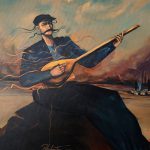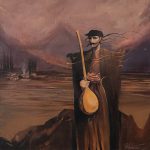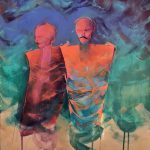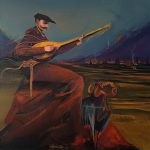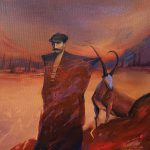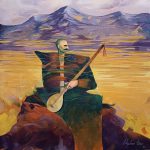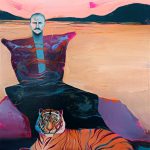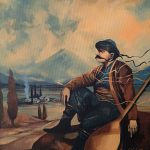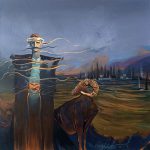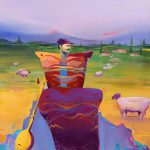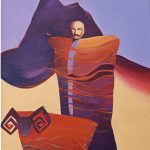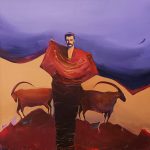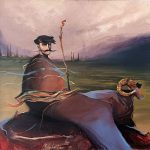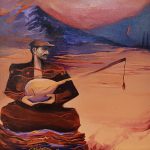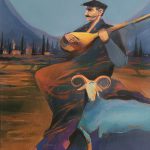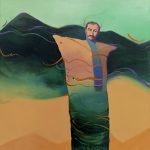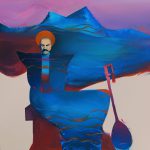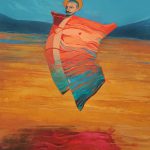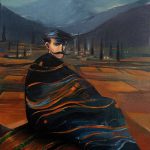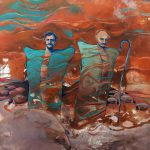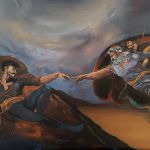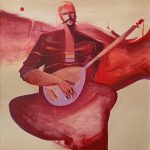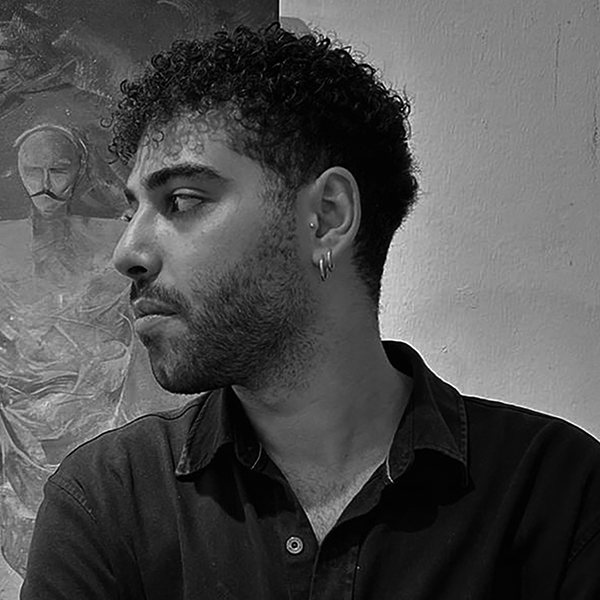
Who is Melik Bilgehan Taşçı? (2001 – Osmaniye)
Born in Osmaniye in 2001, raised and living in Antalya, the 23-year-old artist participated in many local painting competitions during his childhood under the guidance of his teachers who influenced him there. He then prepared for the Gazi Painting Department and started the Painting-Work Department of Gazi University Fine Arts Education in Ankara. The artist, who participated in two international exhibitions with UNESCO, has participated in many mixed exhibitions, projects and events in Ankara and Antalya. He still continues his education life at Gazi University in Ankara and continues his work.
Art Perspective;
The artist, whose art practice is based on deeply examining and interpreting the cultural layers of Anatolian culture with a contemporary understanding, prefers to focus on folkloric elements and work in this field, while reconstructing traditional storytelling in his works with his own style. He handles characters such as shepherds with dull expressions, dervishes and bards with a monumental simplicity. This stylization in his figures allows the artist to create a collective identity that represents the cultural continuity of these lands by purifying the Anatolian people from their individual personalities. It is a type of ”sameness” that tells that this culture has always existed and will exist.
Art Events Participated;
-UNESCO International Group Art Exhibition, New York, 2022.
-UNESCO International Group Art Exhibition, Greece, 2022.
-Republic Exhibition, 2022.
-Small Works Group Exhibition, Antalya Modern Arts Gallery, 2023.
-International Equinox2 Exhibition, Haliç University, 2023.
-Mail Art Exhibition, Gazi University, 2023.
-October 29 Mixed Exhibition, Gazi University, 2023.
-Century Exhibition, Turgut Ozal University, 2023
-100th Year of the Republic Painting Competition Exhibition, 2024.
-10th ArtAnkara Contemporary Art Fair, Gazi University, 2024.
-Art’a Kalanlar Group Painting Exhibition, Artsan Gallery, 2024
-Benzemezler Group Painting Exhibition, BRHD, 2024
-Atelye 208 Original Printmaking Group Exhibition, Gazi University, 2024.
-1st ArtNouva Contemporary Art Fair, Gazi University Stand, 2024.
-New Year Exhibition, Artsan Gallery, 2024.
-Eşik Group Painting Exhibition, Anita Gallery, 2025.
-2nd Antalya Contemporary Art Fair, Artsan Gallery, 2025
-11.ArtAnkara Contemporary Art Fair, Artsan Gallery, 2025
Manifest;
‘’Memory of the Black Earth’’
“Many brave men have passed through these lands... The footprints of a brave man may be lost in the endless steppes of Anatolia; but those traces cannot be erased from the memory of the land. I set out to find and show these traces again.”
My art practice is based on deeply examining and understanding the cultural layers of Anatolia, reinterpreting them with my own unique narrative language and carrying them to the future. I aim to create a new form of storytelling by blending the timeless melodies and collective memory of these lands with a contemporary aesthetic understanding.
The bards, shepherds, Anatolian people and dervishes in my works are the carriers of collective stories that represent the thousands of years of cultural continuity of these lands, rather than individual identities. The shepherds with dull expressions are not just characters; They are universal narrators who are purified from characteristic features, standing monumentally, living in the timeless memory of Anatolia, connecting the past and the future. The durability and existential cycle of these lands are hidden in their silent stance.
The conscious deformations on the space and figures give me the opportunity to present the story I want to express in a freer and more versatile way. In addition, by establishing a connection between the desired atmosphere and the traditional structure, it aims to offer new layers of meaning to the viewer. While folkloric elements – kepenek, bağlama, saz, herd etc. – are used as symbols, their visual and conceptual meanings are expanded and a new aesthetic context is presented. The use of stylization and deformation removes these elements from their individual contexts and makes them representatives of a timeless and universal identity.
My aim is to ensure that the viewer is not only an observer but also an active participant in this cultural story. The cultural codes of Anatolia are at the center of this story. "Kara Toprakrağın Benimeği" is not only an art practice, but also a cultural dialogue that defies time. Every figure, every story and every symbol continues to live as a universal epic of these lands.
